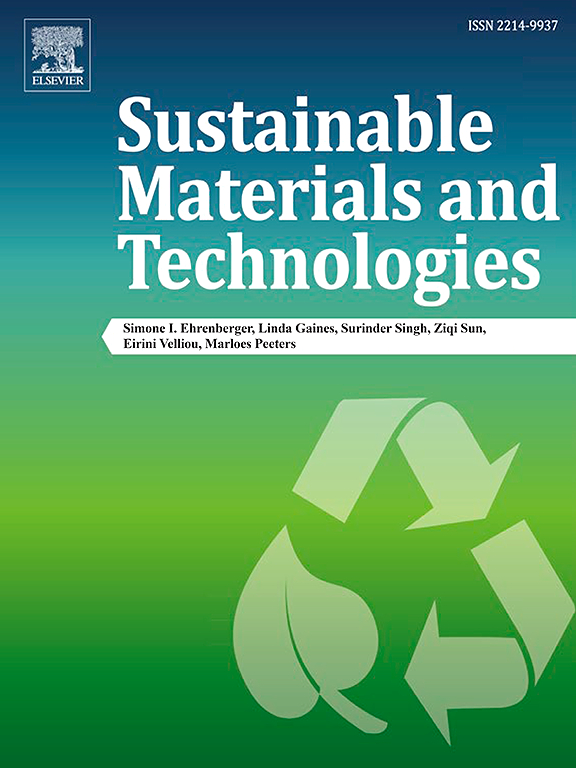利用医用口罩废料和PEDOT: pss基导电油墨制成的可穿戴应变传感器和柔性直流纳米发电机
IF 8.6
2区 工程技术
Q1 ENERGY & FUELS
引用次数: 0
摘要
2019冠状病毒病大流行期间,废弃口罩中的聚丙烯(PP)的处理已成为河流和河口等水生环境中塑料颗粒污染的主要来源,引起了医疗保健行业的高度关注。将这些废弃聚合物转化为高价值的电子产品提供了经济上可行和可持续的解决方案,为创新方法铺平了道路。直流摩擦纳米发电机(dc - teng)的实际应用需要精确匹配的金属-半导体界面。此外,可穿戴传感器必须具有灵活性和舒适性,以确保个人健康监测和人机交互的可靠性能。在这项研究中,我们使用一种简单的滴铸法将聚(3,4-乙烯二氧噻吩)聚苯乙烯磺酸盐(PEDOT:PSS)基杂化导电层沉积在由废弃掩模制成的PP基板上。这使得柔性应变传感器和基于纺织品的dc - teng的制造成为可能。我们的环保方法符合多项可持续发展目标(SDG),特别是可持续发展目标12,该目标旨在促进负责任的消费和生产。本文章由计算机程序翻译,如有差异,请以英文原文为准。
Wearable strain sensor and flexible direct-current nanogenerator made by medical mask wastes and PEDOT:PSS-based conductive inks
The disposal of polypropylene (PP) from discarded masks during the COVID-19 pandemic has become a major source of plastic particle pollution in aquatic environments, such as rivers and estuaries, drawing significant attention from the healthcare industry. Converting these waste polymers into high-value electronic products offers an economically viable and sustainable solution, paving the way for innovative methodologies. The practical application of direct-current triboelectric nanogenerators (DC-TENGs) requires a precisely matched metal-semiconductor interface. Additionally, wearable sensors must be designed with flexibility and comfortability to ensure reliable performance in personal health monitoring and human-machine interaction. In this study, we use a simple drop-casting method to deposit a poly(3,4-ethylenedioxythiophene) polystyrene sulfonate (PEDOT:PSS)-based hybrid conductive layer onto a PP substrate derived from discarded masks. This enables the fabrication of flexible strain sensors and textile-based DC-TENGs. Our environmentally friendly approach aligns with several Sustainable Development Goals (SDGs), particularly SDG 12, which promotes responsible consumption and production.
求助全文
通过发布文献求助,成功后即可免费获取论文全文。
去求助
来源期刊

Sustainable Materials and Technologies
Energy-Renewable Energy, Sustainability and the Environment
CiteScore
13.40
自引率
4.20%
发文量
158
审稿时长
45 days
期刊介绍:
Sustainable Materials and Technologies (SM&T), an international, cross-disciplinary, fully open access journal published by Elsevier, focuses on original full-length research articles and reviews. It covers applied or fundamental science of nano-, micro-, meso-, and macro-scale aspects of materials and technologies for sustainable development. SM&T gives special attention to contributions that bridge the knowledge gap between materials and system designs.
 求助内容:
求助内容: 应助结果提醒方式:
应助结果提醒方式:


